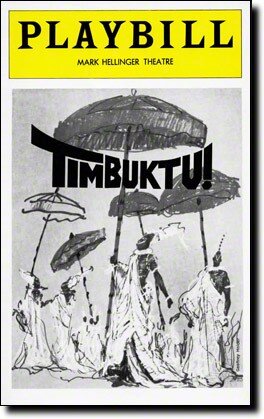Black Revivals of the 1970s
“The Wiz motivated the formation and enactment of a community of black theatergoers and critics who defied the hegemony of white critics and whose resistance underlined the white perspective of mainstream papers and negated the presumption that a white perspective is objective or universal.”
Changed for Good - A Feminist History of Broadway - Stacy Wolf, pg.115
“These productions provided black actors, directors, and designers with new opportunities to work, even if it was not always on the terms or about the subject matter that they wanted. Many of these artists would have preferred to hvae the funds to produce new work that spoke directly to the black experience, but they saw black productions of white shows as an important way station on the road to producing their own theater.
The Great White Way - Warren Hoffman, pg. 117
Pearl Bailey in the all-black version of Hello, Dolly! - November 12, 1967 – December 20, 1969 - Minskoff Theatre
“Flamboyant Broadway producer David Merrick never was at a loss to find the right publicity stunt that would save or prolong the life of his shows. Even though Hello, Dolly! had been hugely successful since it first opened on January 16, 1964, when receipts began to sag at the box office three years later he decided the musical needed a shot in the arm.
His answer to the problem – a Black version with no less than Pearl Bailey as Dolly and Cab Calloway as Horace Vandergelder, in this musicalization of Thornton Wilder’s The Matchmaker by Jerry Herman. With Emily Yancy as Irene Molloy and Winston DeWitt Hemsley as Barnaby also in the cast, it officially opened to rapturous reviews on November 12, 1967 at the St. James Theatre, where the previous incarnation, starring Betty Grable, had closed three days before.”
“Miss Bailey was equally straightforward with those who criticized her because the cast of her ''Hello, Dolly!'' was all black. ''I wasn't hired to do an all-colored 'Dolly.' It was just one of those things,'' she said.
''A lot of talented people showed up and what's wrong with them having a job? What is good for the Negro? What is good for the Negro is good for everyman. Every man has a place in this world, but no man has a right to designate that place.''
Watch: Pearl Bailey singing “Before the Parade Passes By”
Watch: Pearl Bailey perform at the 1968 Tony Awards
Listen to: NPR’s “An Updated ‘Annie’ and the Tradition of Nontraditional Casting
“David Merrick stood virtually alone in his revelation of the effects of theatrical prejudice… Most producers denied that discrimination existed in the theatre and that they could do anything about it anyway.”
Hello Dolly also fulfilled Merrick’s desire to increase black employment on Broadway, both onstage and behind the scenes.”
Black Musical Theatre - Allen Woll, pg. 227
“Bailey would go on to win a Tony Award for her role in the all-black version of Hello Dolly!, which ran for 2,844 performances [collectively] from Nov. 12, 1967 to Dec. 27, 1970*. Thelma Carpenter was cast as Bailey’s understudy and alternate for all matinees, famously subbing for Bailey more than a hundred times and at one point playing the role for seven straight weeks.”
* Pearl Bailey left the show on December 20, 1969, a year before it closed on Broadway.
“Miss Bailey and Cab Calloway, as well as their all-Negro company, will go on a 40-week national tour starting in Boston on Jan. 13. The end of the all-Negro company’s Broadway reign which began Nov. 12, 1967 and Miss Diller’s succession will necessitate a complete recasting.”

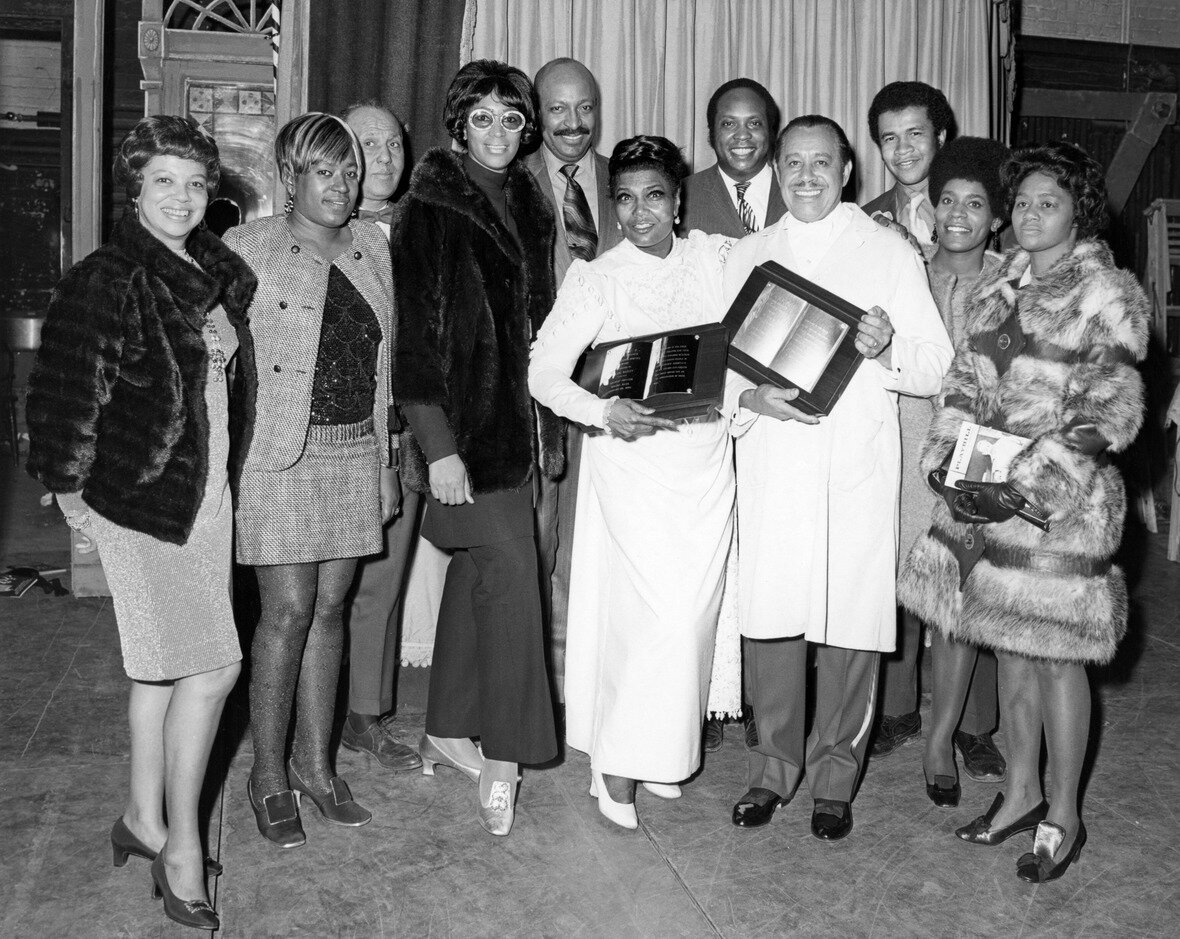

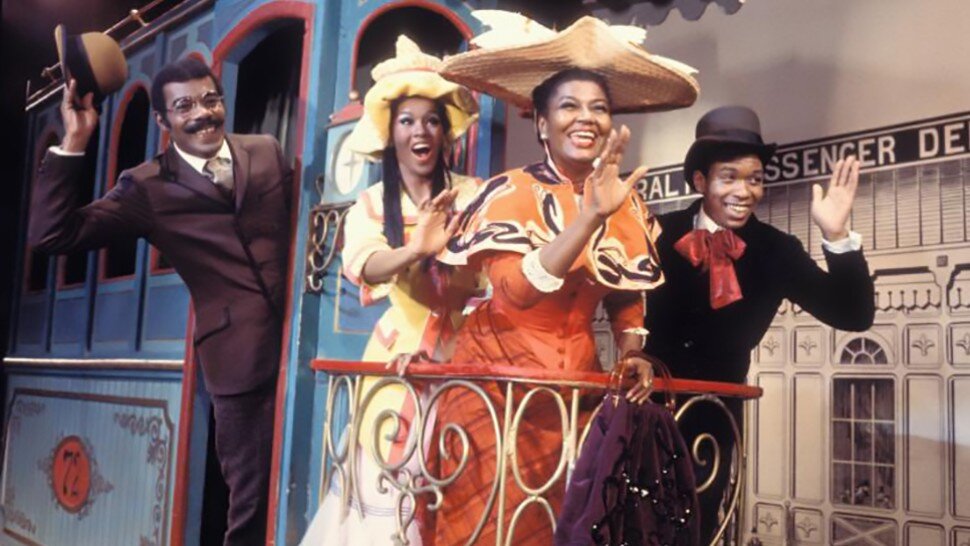
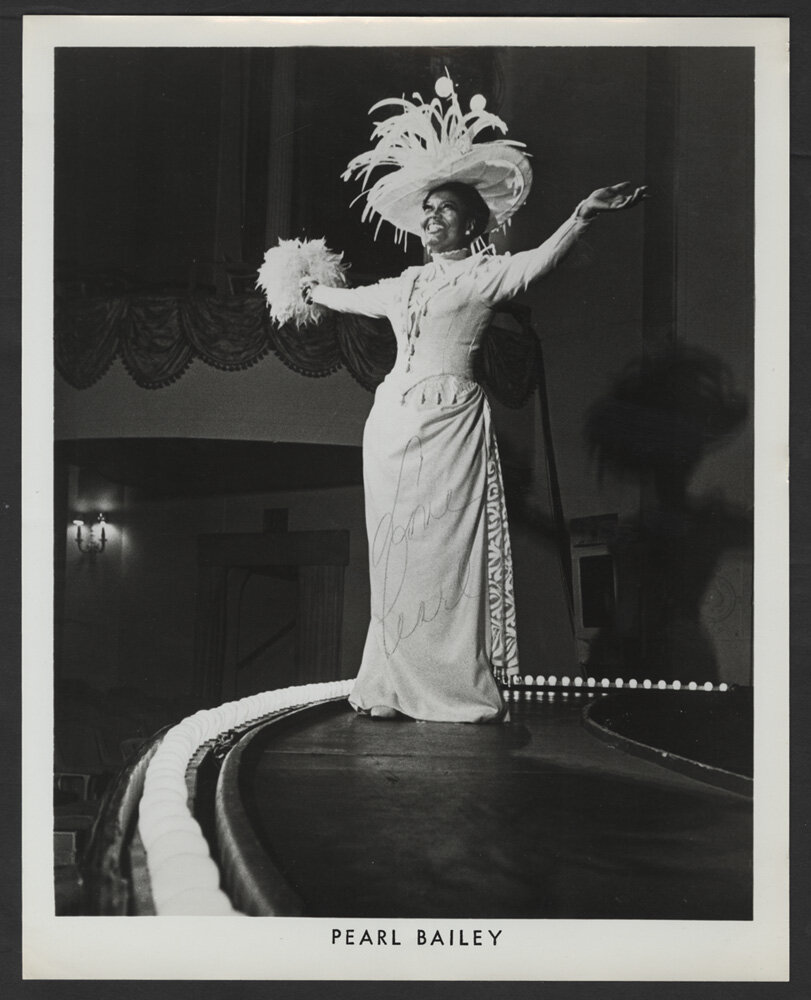
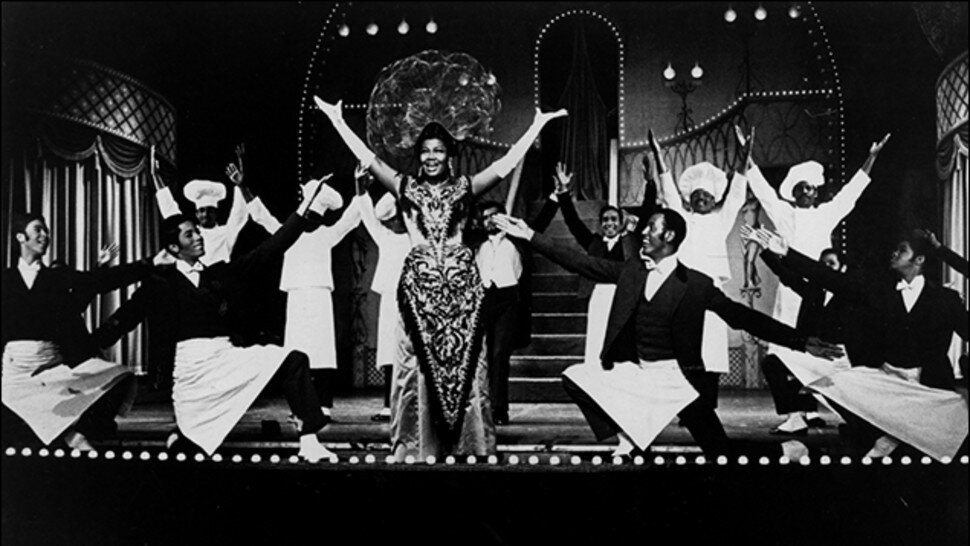

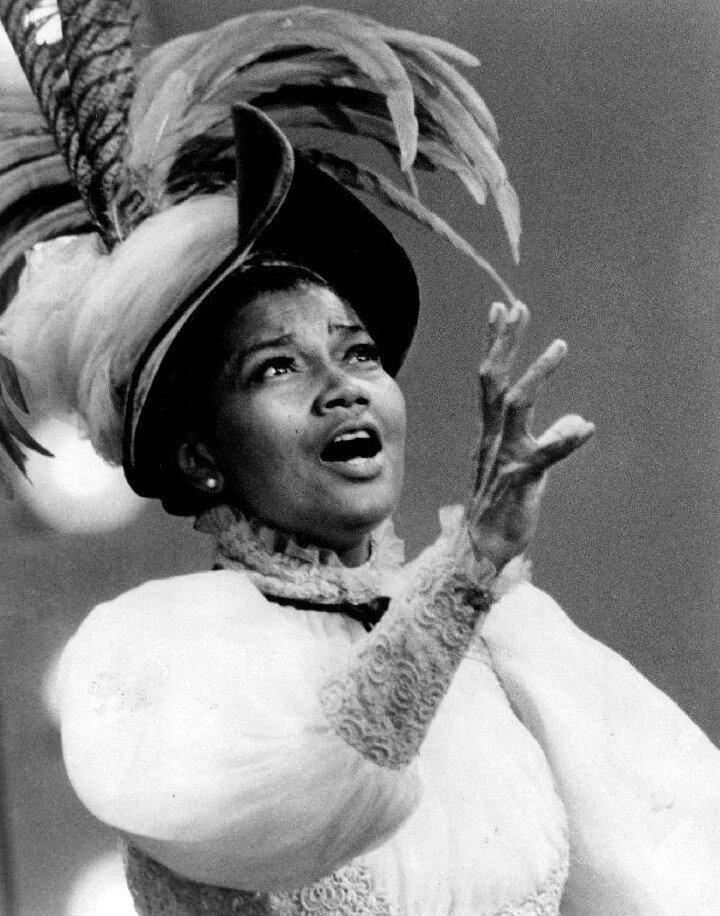
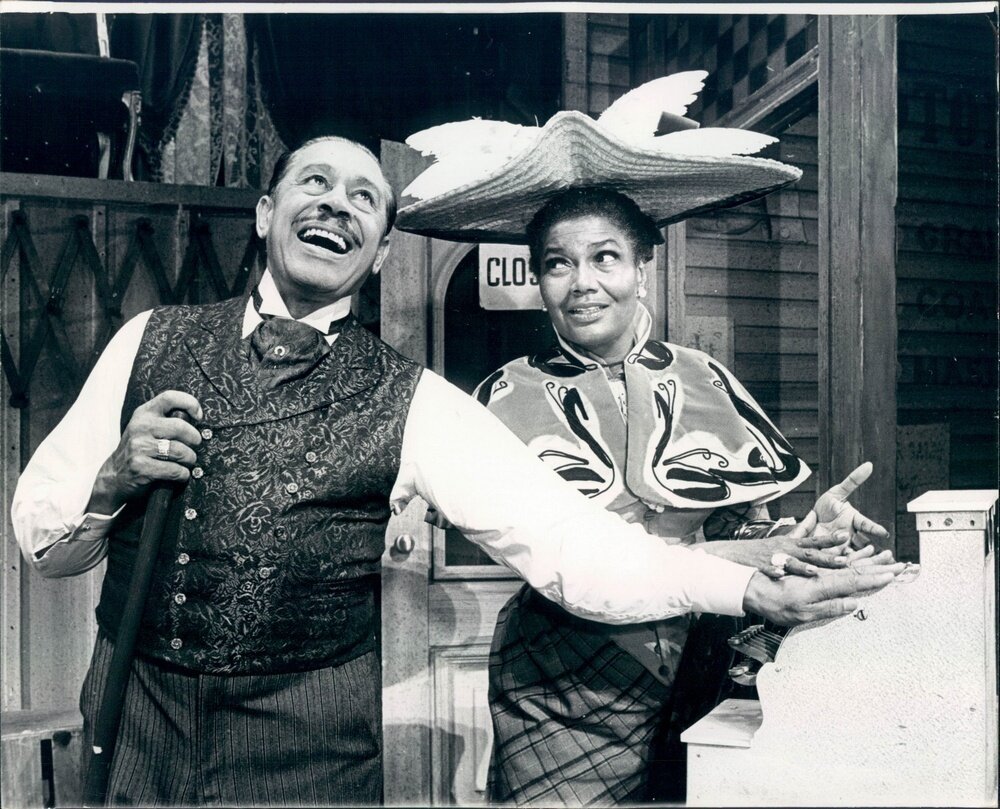




Guys and Dolls - Opening: July 10, 1976 - Broadway Theatre
The 1976 show [Guys and Dolls] was the brainchild of director and choreographer Billy Wilson, who had envisioned the black revival after staging an all-white production years earlier [at Brandeis University]. The Frank Loesser songs and the Swerling and Burrows book stayed [though updated], but the music received Motown-style updates by Danny Holgate and Horace Ott, and the change in ethnicity made it necessary to occasionally alter the lyrics and the dialogue.”
Black Broadway - Stewart T. Lane, pg. 188
“He credits the popularity of such black shows as “The Wiz” and “Bubbling Brown Sugar” to an increasing interest in the theater among black people. “There are great numbers of blacks in the audience, thank God,” he said. “When I'd go to a theater in Philadelphia in the mid‐50's, there were maybe three black people there.
There was not a whole lot in the theater that related to black people in those days. People need their own heroes, and when you put black heroes on the stage, it becomes not only an entertainment for black people, it also has an educational value for black people. I want my two children to look at black progress in the forefront, and not have to look at Clark Gable and Betty Grable and Joan Crawford, like I did.”
Listen: Guys & Dolls cast recording - 1976 Revival
“The present producers, possibly taking a leaf out of David Merrick's book for “Hello Dolly!”, have made this “Guys and Dolls” entirely black. It doesn't seem to matter at all. The musical works as admirably black as it worked admirably white, and while one remembers such luminaries as the original Vivian Blaine, Sam Levene and Stubby Kaye, their successors seem perfectly at home in Harlem.”
“Despite a healthy run through the summer of the Bicentennial year, few endeavored to follow in the footsteps of Dolly or Dolls, as new and original black musicals to appear on the scene.” - Woll, pg. 192
Timbuktu - Opening: May 9, 1978 - Mark Hellinger Theatre
“The 1970s saw another all black revival on the Great White Way. Timbuktu! was a resetting of the musical Kismet, which had premiered on Broadway in 1953. Like Kismet, the play’s book was written by Luther Davis, and its songs adapted the music of Alexander Borodin, with lyrics by George Forrest and Robert Wright. The story still concerned a clever poet who arranges for his beautiful daughter to marry a prince, but while Kismet was set in Baghdad, Timbuktu! was set in the Ancient Empire of Mali, West Africa. In keeping with the new locale, several original songs based on African folk music were written by the Kismet lyricists, and new dances, sets, and costumes were created.”
Black Broadway - Stewart F. Lane, pg. 189
“The dances, on the other hand, were agreeably energetic, and there was fine stilt‐walking performance by Obba Babatunde. All in all, despite Miss Kitt and Mr. Hawkins, it was a lackluster show, and without luster, Timbuktu! has relatively little to offer.”
Watch: Eartha Kitt Interview
Watch: “Rahadlakum” from Timbuktu
“Luther Davis [librettist] decided to give Kismet a black setting and move the story to Timbuktu in the 14th Century. He explained, “there were many sophisticated cultures in Africa, and I thought it was important for people to know that and not put the Africans down in the primitive book all the time.”
Black Musical Theatre - Allen Woll, pg. 269





